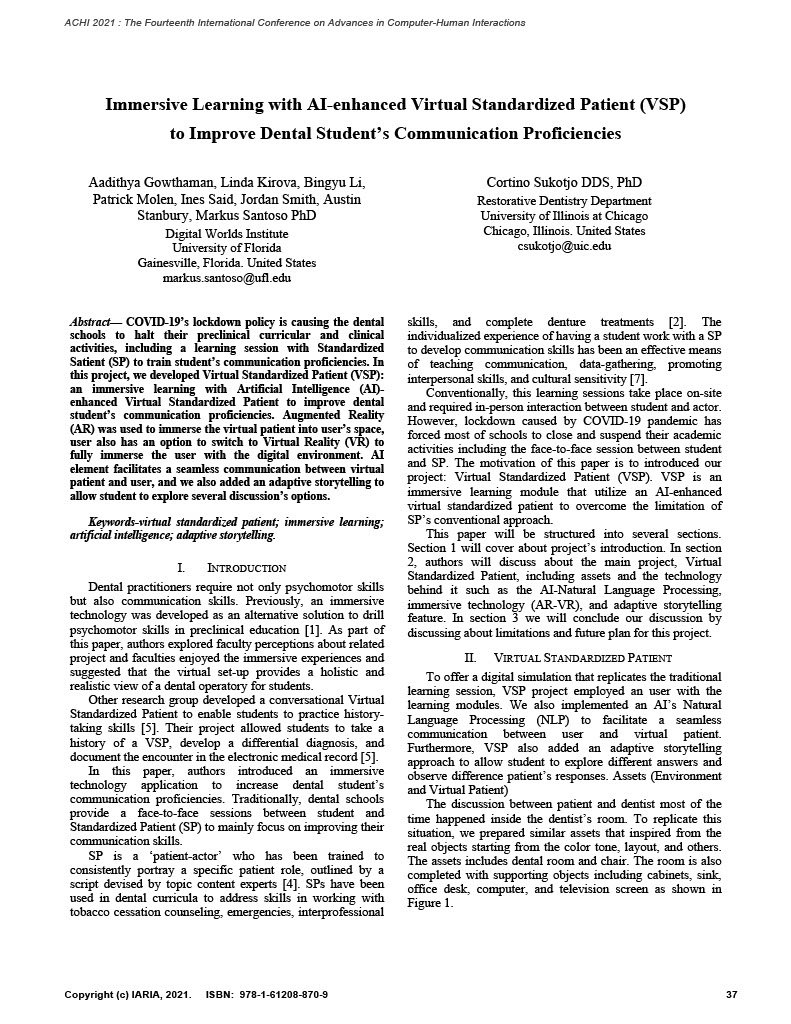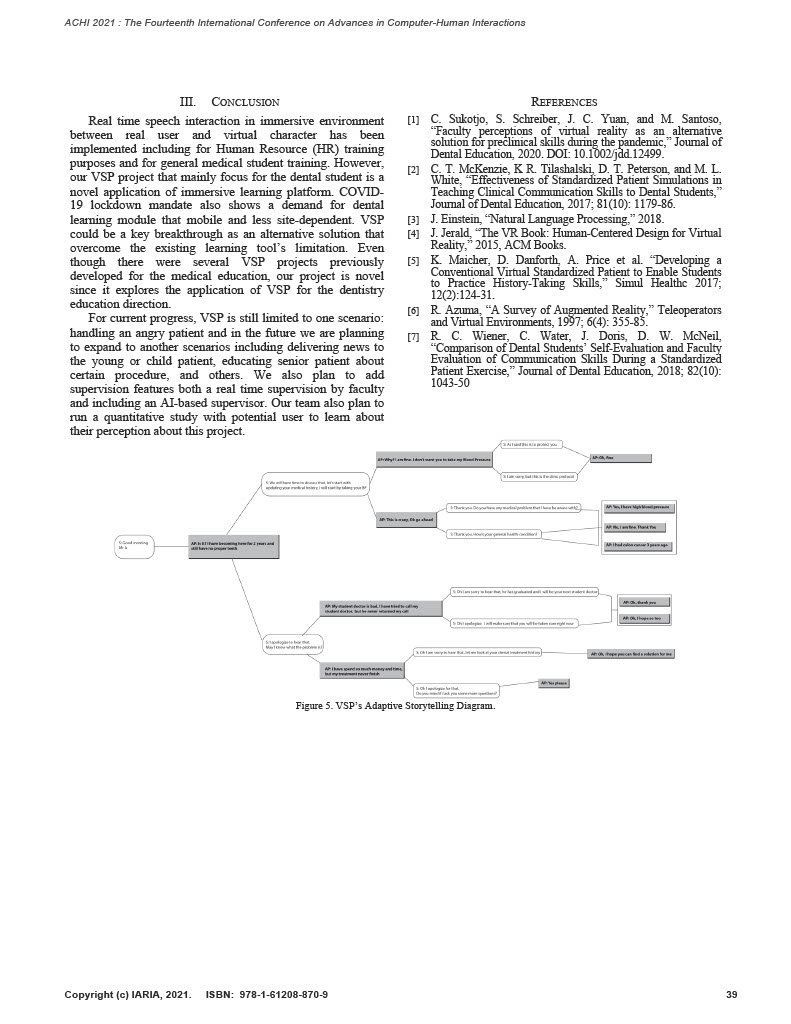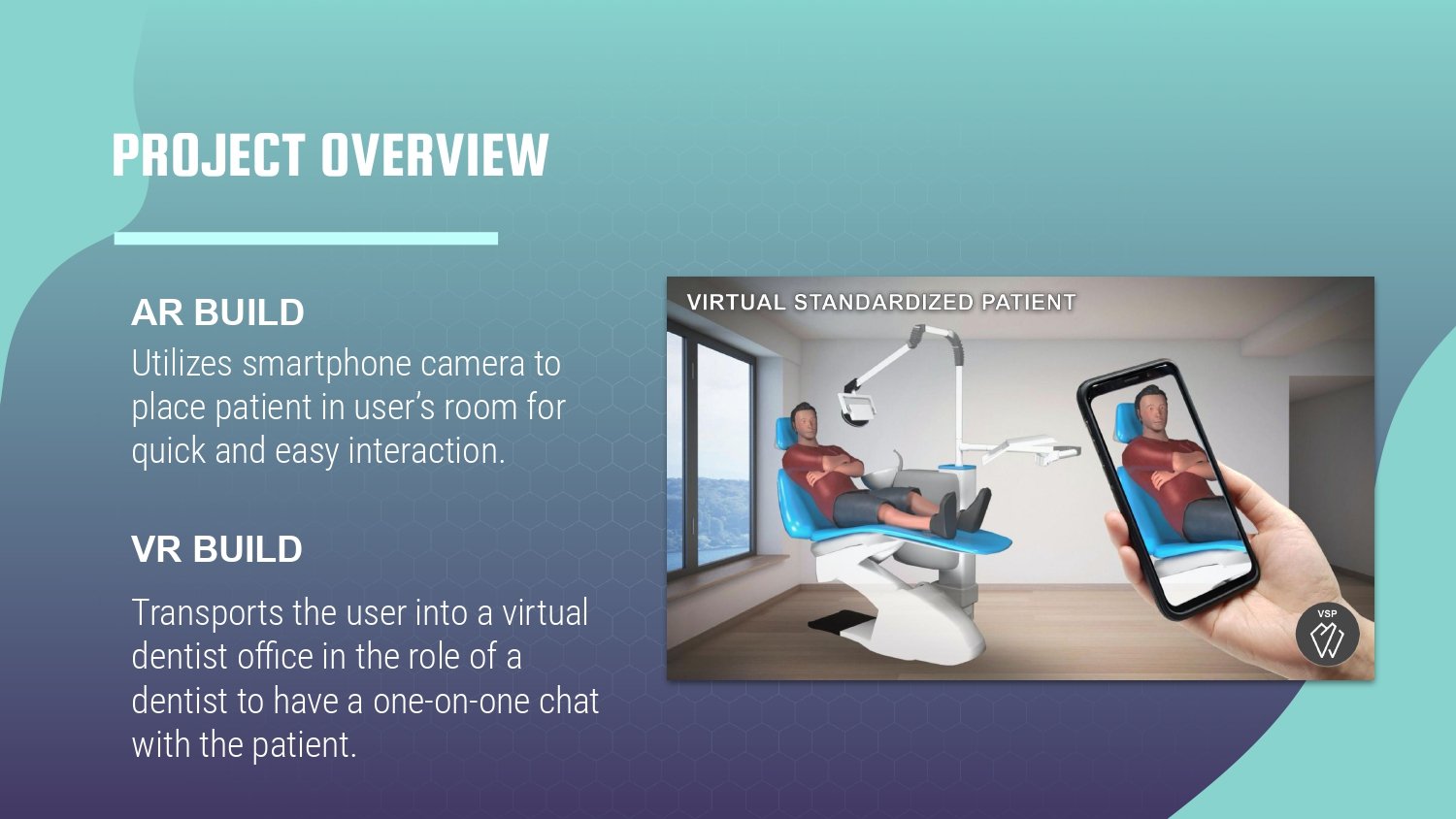Addressing the challenges of cost and accessibility in medical training, we undertook a project focused on advancing Virtual Reality (VR) applications for dental education, specifically tailored for aspiring professional dentists. Traditional in-person training demands significant resources, including time, finances, actors, and physical presence, making it impractical for various reasons such as financial constraints, disabilities, or unexpected global events like pandemics. While alternatives like Zoom classes or YouTube tutorials exist, the lack of immersion with technical tools poses a significant hurdle, limiting realistic practice.
Enter Virtual Standardized Patient (VSP), an innovative Virtual Reality application that immerses student dentists in a virtual dental office, where they are tasked with filling cavities on virtual teeth. A key challenge in virtual training scenarios is the absence of haptic reception. The inability to feel touch in immersive virtual environments hampers realism and effective learning. To address this, we integrated Bebop haptic gloves into the application, providing users with a vibrating response that simulates the sensation of drilling. The feedback dynamically varies with the depth and direction of the drilling, enhancing the accuracy of usability and teaching users the technical intricacies of filling cavities.
The implementation of haptic feedback not only improves the realism of the training but also promotes accessibility to VR patient training on a broader scale. Looking forward, VSP stands as a pioneering educational tool with the potential to empower dentists globally. By leveraging technology, we aim to break down barriers, providing a more accessible and accurate means of VR medical training that can be utilized by dentists anywhere in the future.
Standardized patients are independent specialists trained to portray patient scenarios for the instruction and assessment of clinical skills of medical students, residents, fellows, and other diverse professionals.
Actors who receive rigorous training to maintain a consistent highly realistic portrayal
Give feedback to trainees on communication and interpersonal skills
Their use facilitates practice in critical thinking, patient safety, crisis management, team interaction, decision making and communication
Controlled experience for learners
VIDEO DEMO
Overall, the goal of this Virtual Standardized Patient project was to create an AI-enhanced VSP to:
Improve dental student’s communication proficiencies
Facilitate practice in critical thinking, patient safety, crisis management, team interaction, decision making and communication skills
Help trainees become more competent in clinical techniques and procedures
Get better training
Increase empathy for patients
Improve patience
Help alleviate dental communication anxiety
THE FUTURE
Adding more asset models for optimal customization purposes
Creating game like features where user has to complete tasks given by the application to increase training options and realism
Adding more rooms / spaces / styles
Adding more speech / text options
Integrating different difficulty settings for beginner, intermediate and professional dentists
Increasing variety of dental problems for students to fix
Recreating existing dentist offices to increase realism
Improving haptic feedback options for increased realism
Oculus Quest
Make the experience more accessible
PUBLICATION AWARDS
Publication



TEAM
Aadithya Gowthaman
Linda Kirova
Bingyu Li
Patrick Molen
Ines Said
Jordan Smith
Austin Stanbury






